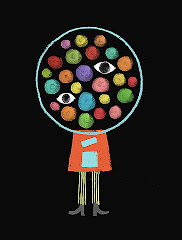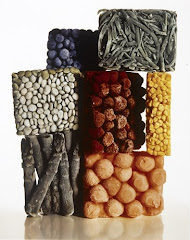Tuesday 9 June 2009
Monday 8 June 2009
A shameful practice - the plundering of Marine Turtle eggs



Towards the end my market excursion, I was horrified to spot these turtle eggs on sale, covered with a grubby piece of sackcloth and paraded shamelessly by a so-called 'fishmonger'. This despicable trade only pushes marine turtles of various species even closer to extinction, and further upsets the fragile marine ecosystems with which they co-exist. Riled by what I saw, my initial reaction was to protest and question the vendor, but as I was alone at the time, it felt safer and perhaps more appropriate to write about and spread awareness, however futile that may seem, or faint the message.
Turtle eggs are considered a delicacy in Central America, and particularly by men who have for many years consumed them raw as an aphrodisiac. ( I have included an advertising campaign commissioned by the Mexican government aimed at the men who eat the eggs, a message intended to dissuade turtle egg consumption by a beautiful young woman who decrees that the men in her life don't really need them). I'm not sure if this ad's rampant sexism and sexual objectification will solve this problem, but at some level I have to conclude that it is better than nothing. Witnessing the sale of such things saddens me to the core, as I feel that young turtles have a hard enough time surviving the oceans and marauding prey, to then have their chances of survival cut even further by pillaging human opportunists. Even adult turtles who can survive well into their seventies aren't safe from the nets of industrial trawlers that themselves damage marine ecosystems beyond comprehension.
Like any country or place you fall in love with, there are always dark sides that disturb us and make us want to ignore the fact of their very existence, things we prefer to turn a blind eye to. I feel this is something the Environmental Office of the Guatemalan Government should be policing, and harshly to stop this senseless trade - and I feel should perhaps wake up somewhat to the beauty and fragility of their awesome natural resources, as these riches are neither infinite nor expendable. The marine turtles native to Guatemala including the Olive Ridley Turtle that is now on The World Conservation Union's Endangered species list need all the help they can get, and deserve to be left well alone. There is a link to this post to the World Wildlife's webpage on turtles, should you wish to read more. I don't climb up onto my soapbox often enough, but I will be emailing a local office of the WWF to see if they have any influence in helping to stop this very damaging and foolish practice.
http://www.worldwildlife.org/species/finder/marineturtles/marineturtles.html
Posted by
Steve Wallis
at
Monday, June 08, 2009
2
comments
![]()
Labels: Olive Ridley Turtle, Turtle Eggs, WWF
Friday 5 June 2009
Market curiosities
Two weeks have passed since I was last at the market in Guatemala City, so I decided to pay another visit to nose around and perhaps spot things I might have missed on my first outing. My enthusiasm was curbed this time by a minor bout of sickness, which made me sensitive to the crowds and smells, which were at times pretty unforgiving.
So despite the assault on my senses, I still found some gems amongst the market glistening like jewels in the morning sun. First up were tomatoes the size of pearls, so decorative and pretty, pretty enough even to grace the slate platters of the world's three Michelen starred restaurants so perfect they were in form and flavour. Next were a type of Chilli Pepper, similar to the Scotch Bonnet and equally as fiery. Then I saw Tamarillo, which you seldom find in the UK - but something I have acquired a taste for. Lastly were Sapote, something again I have never seen before and native to Guatemala, and as luck would have it, my bravery for trying out these new delicacies was significantly diminished, so notes on flavours to be published later.
Posted by
Steve Wallis
at
Friday, June 05, 2009
4
comments
![]()
Wednesday 3 June 2009
Tuesday 2 June 2009
Monday 1 June 2009
Chuchitos bonitos!
Like Pepian and Pacaya, Chuchitos are wholeheartedly Guatemalan, and seem to capture the vibrancy and conviviality of its people and way of life. Like all great recipes that yield deliciously awesome results, you need bags of time set aside. The making of Chuchitos is no exception. These 'little dogs' are made in stages and take the best part of a day to prepare and cook.
The first thing to be made is the 'salsa', a rich tomato sauce that is made all the better for having had a day to develop and the acidity to soften and give way to a luxurious tomatoey spiciness. Two different types of tomatoes, pimentos and onions are blanched, then pureed. The strained puree has pork fat added, and then is allowed to simmer, along with chilli Guace, chilli Passa and good pinches of seasoning and more dried chilli flakes.
The tortillas are made with maize flour, water and seasoning. These are then formed into luscious little rounds by hand. The petals are stripped from the Flor de Isote, lightly washed and spun till dizzy in a salad spinner.
Once each tortilla has been made, a pinch of petals are added, along with a chunk of pork fillet (I'm sure beef would work equally as well here - as would quail breasts come to think of it..!) Then the salsa is draped over, after which the Chuchito is made by folding the two sides together, Cornish Pasty like, and the ends pinched to seal the edges and keep all the delicious ingredients neatly encapsulated. The bit I love best about Chuchitos is how they are then prepared for cooking; corn husks are steamed for a few minutes, and their papery skins are then used as jackets for the little dogs, which are then placed in a pan and steamed for 40 minutes or so until the tortillas are soft and the meat inside is cooked through and tender.
The hot Chuchitos are served in their skins, to be opened at the table, with spoonfuls of salsa and Chiltepé as accompaniments. Buen Provecho!
Posted by
Steve Wallis
at
Monday, June 01, 2009
2
comments
![]()
Labels: Chuchitos
Flor de Izote - Yucca Flowers
As my wonderful trip to the market with Marie was coming to a close, and both of us weary and laden with exquisite spoils from the market, Marie dived off into the crowds to return with these beautiful flowers. I had seen them before, but was quite unsure of their origin and what they would be used for. I figured they would adorn the dinner table later that night, or perhaps fragrance the house with their scent. On closer inspection, these had only a light fragrance, like Jasmine, but not enough to be noticed.
Once home I soon found out that these are in fact food, and a not a beauty accessory as I had initially thought. The flowers are dissected, and it is in fact the petals that are then eaten.
In this instance, it is part of the dish known fondly here as Chuchitos (little dogs), that are parcels of meat, sauce and petals held together in a corn tortilla, wrapped in maize husks and steamed. I guess this takes me smoothly to my next post.....
Posted by
Steve Wallis
at
Monday, June 01, 2009
4
comments
![]()
Labels: Flor de Izote, Yucca Flowers
Colour everywhere.
I couldn't decide with the last lot of colours, so have decided to show whatever felt most exciting and interesting.
Posted by
Steve Wallis
at
Monday, June 01, 2009
0
comments
![]()
Colours Orange
Colours orange are; sweet Alphonso mangoes, mandarins, highly fragrant papaya and lychees, carrots and more intensely hued papaya.
Posted by
Steve Wallis
at
Monday, June 01, 2009
1 comments
![]()
Labels: Orange
Colours Green at the Mercado
The central mercardo is a fortnightly event that happens in Guatemala City, and seems to take over acres of the city with myriad explosions of colour, sights, sounds and alluring smells. My first trip there had my heart racing; I've always been partial to a market or two, be it fish, fauna or flea, markets are always somewhere I want to be as they never cease to inspire me with their rich soups of activity and cultural diversity, however mundane or exciting the location.
This market has to be in my top ten of markets I have ever visited - because of the sheer multitude of beautiful things to admire and ponder over, but also for the fascinating cultural richness that was also on show, played out on pavements and under awnings. All of the beautifully fresh ingredients are laid out temptingly by the largely Mayan vendors - the produce is organic by default, and grown up in the cooler mountainous regions of the country. The indigenous Mayan women travel in from all parts of the country, their wares bundled in coloured cloth and displayed lovingly the morning sun.
As you have probably gathered from my blog by now, I am a bit obsessed with colour, so in the spirit of trying to be creative with what I post, I have decided to post up these photos in colour groups; green, orange, red and blue.
Here's to green; cactus leaves and various fresh herbs, luscious avocados, spinach greens, palm flowers and fragrant bananas, green to vivid yellow.
Posted by
Steve Wallis
at
Monday, June 01, 2009
0
comments
![]()
Labels: Green, Guatemala City, Mercado





















































































































